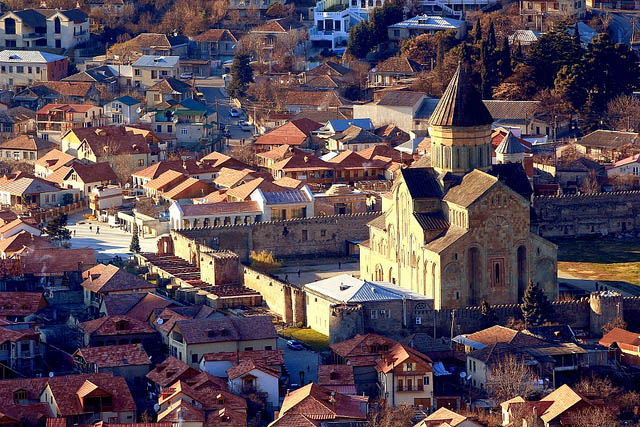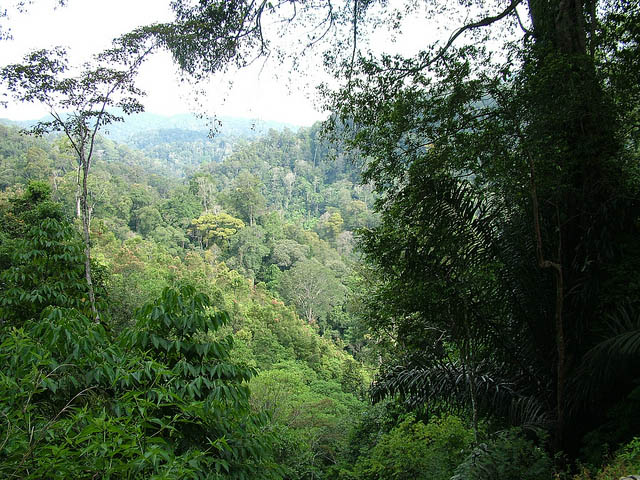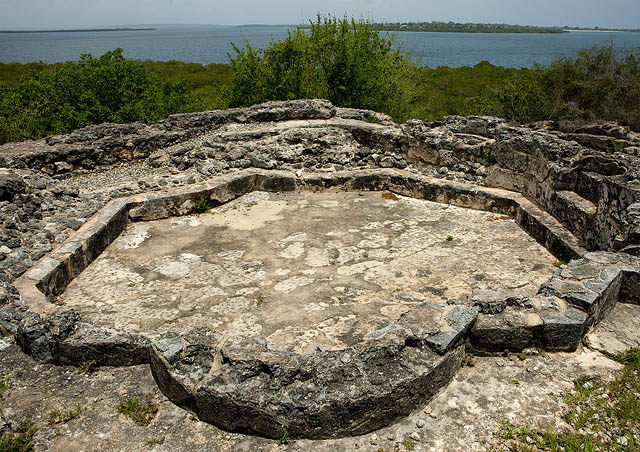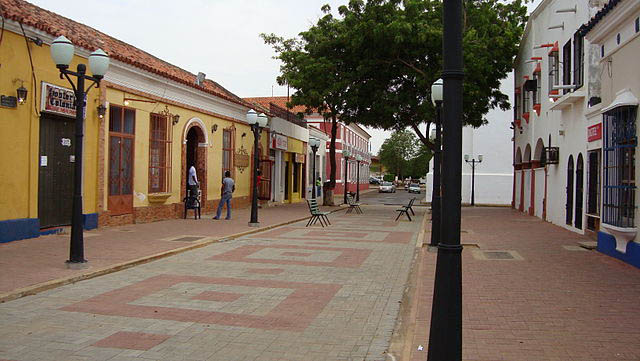1.Cultural Landscape and Archaeological Remains of the Bamiyan Valley (2003), Afghanistan
==========================================================================================
2.Minaret and Archaeological Remains of Jam (2002), Afghanistan
3.Belize Barrier Reef Reserve System (2009),Belize
4.Manovo-Gounda St Floris National Park (1997), Central African Republic
5.Humberstone and Santa Laura Saltpeter Works (2005), Chile
6.Los Katíos National Park (2009), Colombia
7.Comoé National Park (2003), Côte d'Ivoire
8.Mount Nimba Strict Nature Reserve (1992), Côte d'Ivoire
9.Garamba National Park (1996), Democratic Republic of the Congo
10.Kahuzi-Biega National Park (1997), Democratic Republic of the Congo
11.Okapi Wildlife Reserve (1997), Democratic Republic of the Congo
12.Salonga National Park (1999), Democratic Republic of the Congo
13.Virunga National Park (1994), Democratic Republic of the Congo
14.Abu Mena (2001), Egypt
15.Simien National Park (1996), Ethiopia
16.Bagrati Cathedral and Gelati Monastery (2010), Georgia
17.Historical Monuments of Mtskheta (2009), Georgia
18.Mount Nimba Strict Nature Reserve (1992), Guinea
19.Río Plátano Biosphere Reserve (2011), Honduras
20.Tropical Rainforest Heritage of Sumatra (2011), Indonesia
21.Bam and its Cultural Landscape (2004), Iran (Islamic Republic of)
22.Ashur (Qal'at Sherqat) (2003), Iraq
23.Samarra Archaeological City (2007), Iraq
24.Old City of Jerusalem and its Walls (1982), Jerusalem (Site proposed by Jordan)
25.Rainforests of the Atsinanana (2010), Madagascar
26.Air and Ténéré Natural Reserves (1992), Niger
27.Fort and Shalamar Gardens in Lahore (2000), Pakistan
28.Chan Chan Archaeological Zone (1986), Peru
29.Rice Terraces of the Philippine Cordilleras (2001), Philippines
30.Niokolo-Koba National Park (2007), Senegal
31.Medieval Monuments in Kosovo (2006), Serbia
32.Ruins of Kilwa Kisiwani and Ruins of Songo Mnara (2004), Tanzania, United Republic of
33.Tombs of Buganda Kings at Kasubi (2010), Uganda
34.Everglades National Park (2010), United States of America
35.Coro and its Port (2005), Venezuela (Bolivarian Republic of)
36.Historic Town of Zabid (2000), Yemen
 |
| Cultural Landscape and Archaeological Remains of the Bamiyan Valley |
The cultural landscape and archaeological remains of the Bamiyan Valley represent the artistic and religious developments which from the 1st to the 13th centuries characterized ancient Bakhtria, integrating various cultural influences into the Gandhara school of Buddhist art. The area contains numerous Buddhist monastic ensembles and sanctuaries, as well as fortified edifices from the Islamic period. The site is also testimony to the tragic destruction by the Taliban of the two standing Buddha statues, which shook the world in March 2001.
==========================================================================================
2.Minaret and Archaeological Remains of Jam (2002), Afghanistan
 |
| Minaret and Archaeological Remains of Jam |
The 65m-tall Minaret of Jam is a graceful, soaring structure, dating back to the 12th century. Covered in elaborate brickwork with a blue tile inscription at the top, it is noteworthy for the quality of its architecture and decoration, which represent the culmination of an architectural and artistic tradition in this region. Its impact is heightened by its dramatic setting, a deep river valley between towering mountains in the heart of the Ghur province.
==========================================================================================3.Belize Barrier Reef Reserve System (2009),Belize
 |
| Belize Barrier Reef Reserve System |
The coastal area of Belize is an outstanding natural system consisting of the largest barrier reef in the northern hemisphere, offshore atolls, several hundred sand cays, mangrove forests, coastal lagoons and estuaries. The system’s seven sites illustrate the evolutionary history of reef development and are a significant habitat for threatened species, including marine turtles, manatees and the American marine crocodile.
==========================================================================================4.Manovo-Gounda St Floris National Park (1997), Central African Republic
 |
| Manovo-Gounda St Floris National Park |
The importance of this park derives from its wealth of flora and fauna. Its vast savannahs are home to a wide variety of species: black rhinoceroses, elephants, cheetahs, leopards, wild dogs, red-fronted gazelles and buffalo, while various types of waterfowl are to be found in the northern floodplains.
==========================================================================================5.Humberstone and Santa Laura Saltpeter Works (2005), Chile
 |
| Humberstone and Santa Laura Saltpeter Works |
Humberstone and Santa Laura works contain over 200 former saltpeter works where workers from Chile, Peru and Bolivia lived in company towns and forged a distinctive communal pampinos culture. That culture is manifest in their rich language, creativity, and solidarity, and, above all, in their pioneering struggle for social justice, which had a profound impact on social history. Situated in the remote Pampas, one of the driest deserts on Earth, thousands of pampinos lived and worked in this hostile environment for over 60 years, from 1880, to process the largest deposit of saltpeter in the world, producing the fertilizer sodium nitrate that was to transform agricultural lands in North and South America, and in Europe, and produce great wealth for Chile. Because of the vulnerability of the structures and the impact of a recent earthquake, the site was also placed on the List of World Heritage in Danger to help mobilize resources for its conservation.
==========================================================================================6.Los Katíos National Park (2009), Colombia
 |
| Los Katíos National Park |
Extending over 72,000 ha in north-western Colombia, Los Katios National Park comprises low hills, forests and humid plains. An exceptional biological diversity is found in the park, which is home to many threatened animal species, as well as many endemic plants.
==========================================================================================7.Comoé National Park (2003), Côte d'Ivoire
 |
| Comoé National Park |
One of the largest protected areas in West Africa, this park is characterized by its great plant diversity. Due to the presence of the Comoé river, it contains plants which are normally only found much farther south, such as shrub savannahs and patches of thick rainforest.
==========================================================================================8.Mount Nimba Strict Nature Reserve (1992), Côte d'Ivoire
 |
| Mount Nimba Strict Nature Reserve |
Located on the borders of Guinea, Liberia and Côte d’Ivoire, Mount Nimba rises above the surrounding savannah. Its slopes are covered by dense forest at the foot of grassy mountain pastures. They harbour an especially rich flora and fauna, with endemic species such as the viviparous toad and chimpanzees that use stones as tools.
==========================================================================================9.Garamba National Park (1996), Democratic Republic of the Congo
 |
| Garamba National Park |
The park's immense savannahs, grasslands and woodlands, interspersed with gallery forests along the river banks and the swampy depressions, are home to four large mammals: the elephant, giraffe, hippopotamus and above all the white rhinoceros. Though much larger than the black rhino, it is harmless; only some 30 individuals remain.
==========================================================================================10.Kahuzi-Biega National Park (1997), Democratic Republic of the Congo
 |
| Kahuzi-Biega National Park |
A vast area of primary tropical forest dominated by two spectacular extinct volcanoes, Kahuzi and Biega, the park has a diverse and abundant fauna. One of the last groups of eastern lowland (graueri) gorillas (consisting of only some 250 individuals) lives at between 2,100 and 2,400 m above sea-level.
==========================================================================================11.Okapi Wildlife Reserve (1997), Democratic Republic of the Congo
 |
| Okapi Wildlife Reserve |
The Okapi Wildlife Reserve occupies about one-fifth of the Ituri forest in the north-east of the Democratic Republic of the Congo. The Congo river basin, of which the reserve and forest are a part, is one of the largest drainage systems in Africa. The reserve contains threatened species of primates and birds and about 5,000 of the estimated 30,000 okapi surviving in the wild. It also has some dramatic scenery, including waterfalls on the Ituri and Epulu rivers. The reserve is inhabited by traditional nomadic pygmy Mbuti and Efe hunters.
==========================================================================================12.Salonga National Park (1999), Democratic Republic of the Congo
 |
| Salonga National Park |
Salonga National Park is Africa's largest tropical rainforest reserve. Situated at the heart of the central basin of the Congo river, the park is very isolated and accessible only by water. It is the habitat of many endemic endangered species, such as the dwarf chimpanzee, the Congo peacock, the forest elephant and the African slender-snouted or 'false' crocodile.
==========================================================================================13.Virunga National Park (1994), Democratic Republic of the Congo
 |
| Virunga National Park |
Virunga National Park (covering an area of 790,000 ha) comprises an outstanding diversity of habitats, ranging from swamps and steppes to the snowfields of Rwenzori at an altitude of over 5,000 m, and from lava plains to the savannahs on the slopes of volcanoes. Mountain gorillas are found in the park, some 20,000 hippopotamuses live in the rivers and birds from Siberia spend the winter there.
==========================================================================================14.Abu Mena (2001), Egypt
 |
| Abu Mena |
The church, baptistry, basilicas, public buildings, streets, monasteries, houses and workshops in this early Christian holy city were built over the tomb of the martyr Menas of Alexandria, who died in A.D. 296.
==========================================================================================15.Simien National Park (1996), Ethiopia
 |
| Simien National Park |
Massive erosion over the years on the Ethiopian plateau has created one of the most spectacular landscapes in the world, with jagged mountain peaks, deep valleys and sharp precipices dropping some 1,500 m. The park is home to some extremely rare animals such as the Gelada baboon, the Simien fox and the Walia ibex, a goat found nowhere else in the world.
==========================================================================================16.Bagrati Cathedral and Gelati Monastery (2010), Georgia
 |
| Bagrati Cathedral and Gelati Monastery |
The construction of Bagrati Cathedral, named after Bagrat III, the first king of united Georgia, started at the end of the 10th century and was completed in the early years of the 11th century. Although partly destroyed by the Turks in 1691, its ruins still lie in the centre of Kutaisi. The Gelati Monastery, whose main buildings were erected between the 12th and 17th centuries, is a well-preserved complex, with wonderful mosaics and wall paintings. The cathedral and monastery represent the flowering of medieval architecture in Georgia.
==========================================================================================17.Historical Monuments of Mtskheta (2009), Georgia
 |
| Historical Monuments of Mtskheta |
The historic churches of Mtskheta, former capital of Georgia, are outstanding examples of medieval religious architecture in the Caucasus. They show the high artistic and cultural level attained by this ancient kingdom.
==========================================================================================18.Mount Nimba Strict Nature Reserve (1992), Guinea
 |
| Mount Nimba Strict Nature Reserve |
Located on the borders of Guinea, Liberia and Côte d’Ivoire, Mount Nimba rises above the surrounding savannah. Its slopes are covered by dense forest at the foot of grassy mountain pastures. They harbour an especially rich flora and fauna, with endemic species such as the viviparous toad and chimpanzees that use stones as tools.
==========================================================================================19.Río Plátano Biosphere Reserve (2011), Honduras
 |
| Río Plátano Biosphere Reserve |
Located on the watershed of the Río Plátano, the reserve is one of the few remains of a tropical rainforest in Central America and has an abundant and varied plant and wildlife. In its mountainous landscape sloping down to the Caribbean coast, over 2,000 indigenous people have preserved their traditional way of life.
==========================================================================================20.Tropical Rainforest Heritage of Sumatra (2011), Indonesia
 |
| Tropical Rainforest Heritage of Sumatra |
The 2.5 million hectare Tropical Rainforest Heritage of Sumatra site comprises three national parks: Gunung Leuser National Park, Kerinci Seblat National Park and Bukit Barisan Selatan National Park. The site holds the greatest potential for long-term conservation of the distinctive and diverse biota of Sumatra, including many endangered species. The protected area is home to an estimated 10,000 plant species, including 17 endemic genera; more than 200 mammal species; and some 580 bird species of which 465 are resident and 21 are endemic. Of the mammal species, 22 are Asian, not found elsewhere in the archipelago and 15 are confined to the Indonesian region, including the endemic Sumatran orang-utan. The site also provides biogeographic evidence of the evolution of the island.
==========================================================================================21.Bam and its Cultural Landscape (2004), Iran (Islamic Republic of)
 |
| Bam and its Cultural Landscape |
Bam is situated in a desert environment on the southern edge of the Iranian high plateau. The origins of Bam can be traced back to the Achaemenid period (6th to 4th centuries BC). Its heyday was from the 7th to 11th centuries, being at the crossroads of important trade routes and known for the production of silk and cotton garments. The existence of life in the oasis was based on the underground irrigation canals, the qanāts, of which Bam has preserved some of the earliest evidence in Iran. Arg-e Bam is the most representative example of a fortified medieval town built in vernacular technique using mud layers (Chineh ).
==========================================================================================22.Ashur (Qal'at Sherqat) (2003), Iraq
 |
| Ashur (Qal'at Sherqat) |
The ancient city of Ashur is located on the Tigris River in northern Mesopotamia in a specific geo-ecological zone, at the borderline between rain-fed and irrigation agriculture. The city dates back to the 3rd millennium BC. From the 14th to the 9th centuries BC it was the first capital of the Assyrian Empire, a city-state and trading platform of international importance. It also served as the religious capital of the Assyrians, associated with the god Ashur. The city was destroyed by the Babylonians, but revived during the Parthian period in the 1st and 2nd centuries AD.
==========================================================================================23.Samarra Archaeological City (2007), Iraq
 |
| Samarra Archaeological City |
Samarra Archaeological City is the site of a powerful Islamic capital city that ruled over the provinces of the Abbasid Empire extending from Tunisia to Central Asia for a century. Located on both sides of the River Tigris 130 km north of Baghdad, the length of the site from north to south is 41.5 km; its width varying from 8 km to 4 km. It testifies to the architectural and artistic innovations that developed there and spread to the other regions of the Islamic world and beyond. The 9th-century Great Mosque and its spiral minaret are among the numerous remarkable architectural monuments of the site, 80% of which remain to be excavated.
==========================================================================================24.Old City of Jerusalem and its Walls (1982), Jerusalem (Site proposed by Jordan)
 |
| Old City of Jerusalem and its Walls |
As a holy city for Judaism, Christianity and Islam, Jerusalem has always been of great symbolic importance. Among its 220 historic monuments, the Dome of the Rock stands out: built in the 7th century, it is decorated with beautiful geometric and floral motifs. It is recognized by all three religions as the site of Abraham's sacrifice. The Wailing Wall delimits the quarters of the different religious communities, while the Resurrection rotunda in the Church of the Holy Sepulchre houses Christ's tomb.
==========================================================================================25.Rainforests of the Atsinanana (2010), Madagascar
 |
| Rainforests of the Atsinanana |
The Rainforests of the Atsinanana comprise six national parks distributed along the eastern part of the island. These relict forests are critically important for maintaining ongoing ecological processes necessary for the survival of Madagascar’s unique biodiversity, which reflects the island’s geological history. Having completed its separation from all other land masses more than 60 million years ago, Madagascar’s plant and animal life evolved in isolation. The rainforests are inscribed for their importance to both ecological and biological processes as well as their biodiversity and the threatened species they support. Many species are rare and threatened especially primates and lemurs.
==========================================================================================26.Air and Ténéré Natural Reserves (1992), Niger
 |
| Air and Ténéré Natural Reserves |
This is the largest protected area in Africa, covering some 7.7 million ha, though the area considered a protected sanctuary constitutes only one-sixth of the total area. It includes the volcanic rock mass of the Aïr, a small Sahelian pocket, isolated as regards its climate and flora and fauna, and situated in the Saharan desert of Ténéré. The reserves boast an outstanding variety of landscapes, plant species and wild animals.
==========================================================================================27.Fort and Shalamar Gardens in Lahore (2000), Pakistan
 |
| Fort and Shalamar Gardens in Lahore |
These are two masterpieces from the time of the brilliant Mughal civilization, which reached its height during the reign of the Emperor Shah Jahan. The fort contains marble palaces and mosques decorated with mosaics and gilt. The elegance of these splendid gardens, built near the city of Lahore on three terraces with lodges, waterfalls and large ornamental ponds, is unequalled.
==========================================================================================28.Chan Chan Archaeological Zone (1986), Peru
 |
| Chan Chan Archaeological Zone |
The Chimu Kingdom, with Chan Chan as its capital, reached its apogee in the 15th century, not long before falling to the Incas. The planning of this huge city, the largest in pre-Columbian America, reflects a strict political and social strategy, marked by the city's division into nine 'citadels' or 'palaces' forming autonomous units.
==========================================================================================29.Rice Terraces of the Philippine Cordilleras (2001), Philippines
 |
| Rice Terraces of the Philippine Cordilleras |
For 2,000 years, the high rice fields of the Ifugao have followed the contours of the mountains. The fruit of knowledge handed down from one generation to the next, and the expression of sacred traditions and a delicate social balance, they have helped to create a landscape of great beauty that expresses the harmony between humankind and the environment.
==========================================================================================30.Niokolo-Koba National Park (2007), Senegal
 |
| Niokolo-Koba National Park |
Located in a well-watered area along the banks of the Gambia river, the gallery forests and savannahs of Niokolo-Koba National Park have a very rich fauna, among them Derby elands (largest of the antelopes), chimpanzees, lions, leopards and a large population of elephants, as well as many birds, reptiles and amphibians.
==========================================================================================31.Medieval Monuments in Kosovo (2006), Serbia
 |
| Medieval Monuments in Kosovo |
The four edifices of the site reflect the high points of the Byzantine-Romanesque ecclesiastical culture, with its distinct style of wall painting, which developed in the Balkans between the 13th and 17th centuries. The Dečani Monastery was built in the mid-14th century for the Serbian king Stefan Dečanski and is also his mausoleum. The Patriarchate of Peć Monastery is a group of four domed churches featuring series of wall paintings. The 13th-century frescoes of the Church of Holy Apostles are painted in a unique, monumental style. Early 14th-century frescoes in the church of the Holy Virgin of Ljevisa represent the appearance of the new so-called Palaiologian Renaissance style, combining the influences of the eastern Orthodox Byzantine and the Western Romanesque traditions. The style played a decisive role in subsequent Balkan art.
==========================================================================================32.Ruins of Kilwa Kisiwani and Ruins of Songo Mnara (2004), Tanzania, United Republic of
 |
| Ruins of Kilwa Kisiwani and Ruins of Songo Mnara |
The remains of two great East African ports admired by early European explorers are situated on two small islands near the coast. From the 13th to the 16th century, the merchants of Kilwa dealt in gold, silver, pearls, perfumes, Arabian crockery, Persian earthenware and Chinese porcelain; much of the trade in the Indian Ocean thus passed through their hands.
==========================================================================================33.Tombs of Buganda Kings at Kasubi (2010), Uganda
 |
| Tombs of Buganda Kings at Kasubi |
The Tombs of Buganda Kings at Kasubi constitute a site embracing almost 30 ha of hillside within Kampala district. Most of the site is agricultural, farmed by traditional methods. At its core on the hilltop is the former palace of the Kabakas of Buganda, built in 1882 and converted into the royal burial ground in 1884. Four royal tombs now lie within the Muzibu Azaala Mpanga, the main building, which is circular and surmounted by a dome. It is a major example of an architectural achievement in organic materials, principally wood, thatch, reed, wattle and daub. The site's main significance lies, however, in its intangible values of belief, spirituality, continuity and identity.
==========================================================================================34.Everglades National Park (2010), United States of America
 |
| Everglades National Park |
This site at the southern tip of Florida has been called 'a river of grass flowing imperceptibly from the hinterland into the sea'. The exceptional variety of its water habitats has made it a sanctuary for a large number of birds and reptiles, as well as for threatened species such as the manatee.
==========================================================================================35.Coro and its Port (2005), Venezuela (Bolivarian Republic of)
 |
| Coro and its Port |
With its earthen constructions unique to the Caribbean, Coro is the only surviving example of a rich fusion of local traditions with Spanish Mudéjar and Dutch architectural techniques. One of the first colonial towns (founded in 1527), it has some 602 historic buildings.
==========================================================================================36.Historic Town of Zabid (2000), Yemen
 |
| Historic Town of Zabid |
Zabid's domestic and military architecture and its urban plan make it an outstanding archaeological and historical site. Besides being the capital of Yemen from the 13th to the 15th century, the city played an important role in the Arab and Muslim world for many centuries because of its Islamic university.
==========================================================================================(Text Content Source:- Wikipedia. Images Source:- Wikimedia, Google, Picasa, Bing, Yahoo, Flickr & etc….)
(Images are copyrighted by their owners. All are free images, taken from the web with the consent of owners who they approved to download it, and any copyright issues found by any image owners, contact the administrator immediately.)



















Say something! Leave a Reply ?